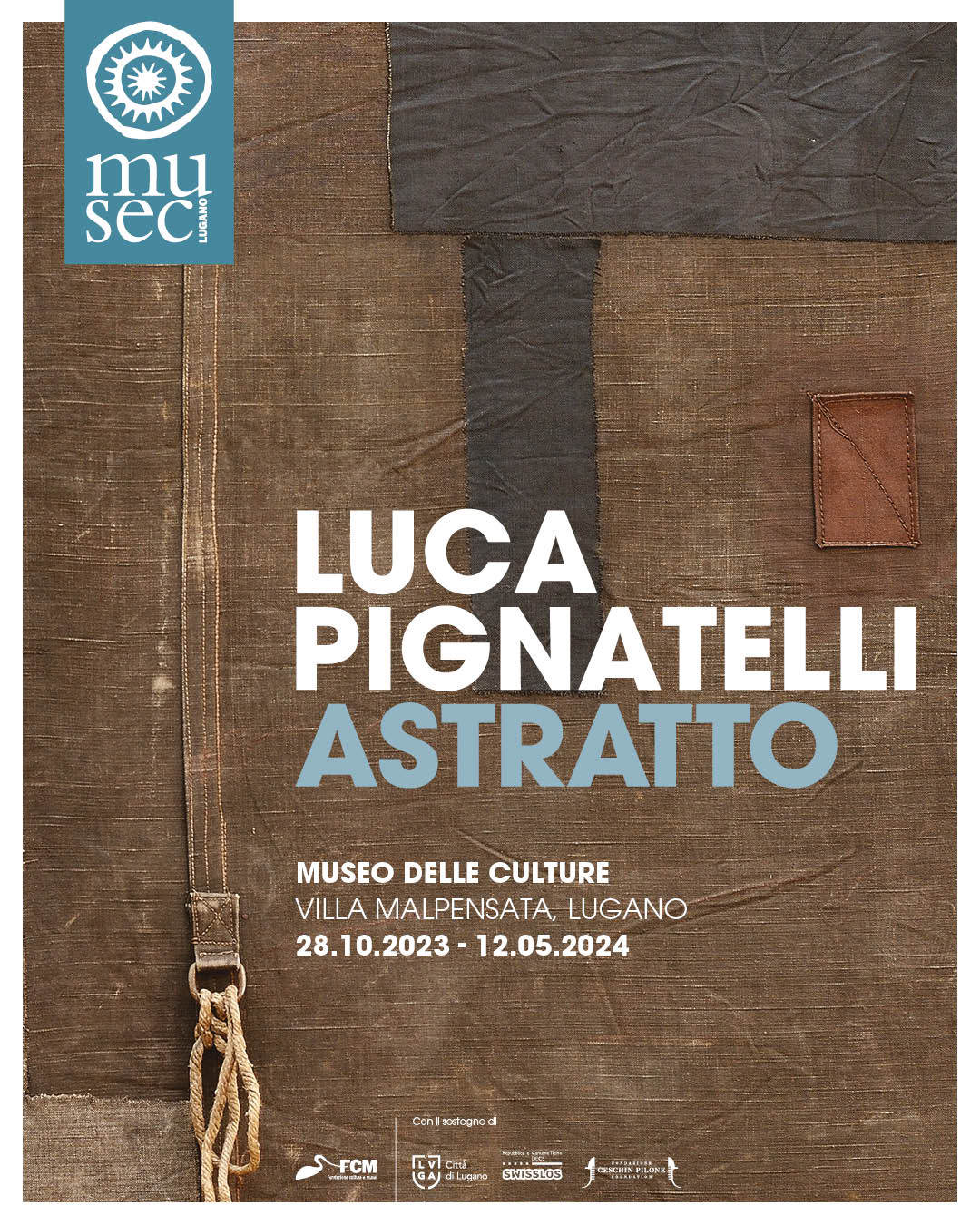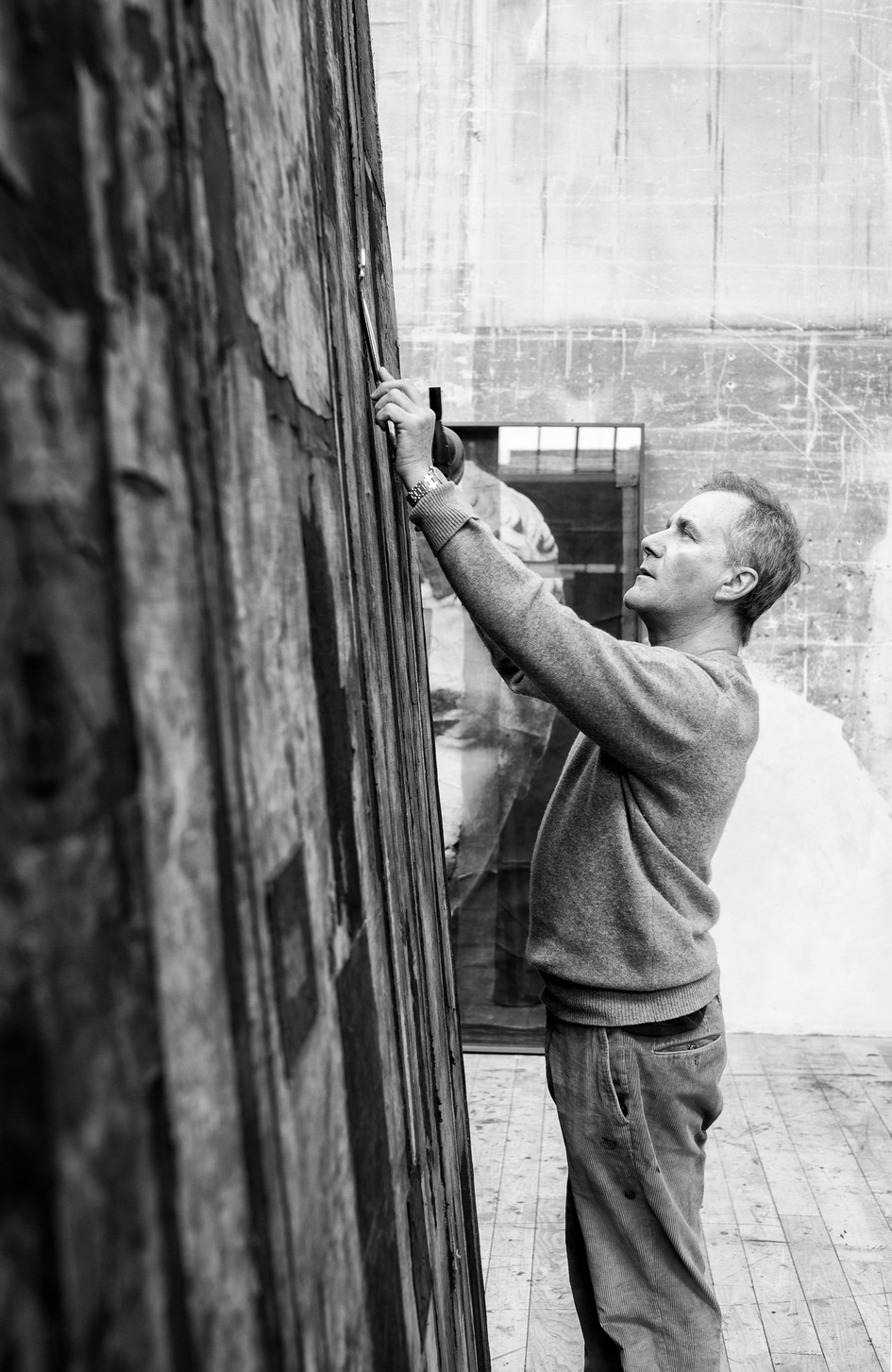Museo delle Culture uses cookies to improve the user experience. If you need more information click on the privacy page. Privacy policy X
28 October 2023 - 12 May 2024, Villa Malpensata, LUGANO
From 28 October 2023 until 12 May 2024, the MUSEC presents an initiative of major historical-artistic value.
The museum presents the first solo exhibition of Luca Pignatelli (Milan, 1962) dedicated exclusively to his abstract research, to which he has devoted himself over the last decade. to which he has focused over the past decade.
The exhibition “Astratto” is the result of a long and continuous dialogue, begun two years ago, between the Milanese artist and Francesco Paolo Campione, curator of the exhibition and director of MUSEC. This dialogue followed a dialectical thread that united memories and reflections directly aroused by the works, books, photographs and objects that fill and animate Luca Pignatelli's large atelier. A confrontation that made it possible to bring out the meaning that the work on abstraction takes on for Pignatelli. This work takes his personal and distinctive relationship with matter and time that has characterised his vast research from the very beginning towards new territories.
The exhibition presents forty-nine works, most of them previously unpublished, of large dimensions, made from large portions of disused railway tarpaulins, spliced, sewn, perforated, burnt, and then painted and worked with inserts of various kinds. A material exhausted and further reduced to the bare minimum to recreate, following the expressive modalities of abstraction, the flavour of a universe constructed from a multiplicity of meanings.

Luca Pignatelli was born in 1962 in Milan, to the psychologist Carla Autelli (1935-2022) and Ercole Pignatelli (born 1935), a painter and sculptor of Lecce origins. After finishing secondary school he enrolled in the Milan Polytechnic School of Architecture, where his constant interest in what he in time would come to refer to as the "sedimentary growth of history" led him to closely follow the teachings of Adolf Loos and Aldo Rossi. In particular, Pignatelli strongly feels the appeal of the idea of the building and the city as the organic summary of the styles and the eras that have succeeded one another.
From the drawings on paper and on masonite, his production has developed via the heterodoxical use and the experimental diversification of materials and techniques, increasingly addressed towards large-scale works.
The preferred venues of his research are the factories, the military arsenals, the anonymous warehouses of port cities that are integrated with the large-scale buildings – temples, cathedrals, and monuments – that have defined the anthropic landscape of European history. Starting from the 1990s, Pignatelli introduced the use, as supports, of materials that have exhausted their previous use, and are already in themselves pictorial, such as railway tarpaulins and, later, assembled papers, textiles, old wooden panels, sheets of galvanized iron, and Persians carpets worn by the time. At the same time, what also emerged is an artistic practice that is essentially serial.
As concerns his aesthetic a main interest in the dialogue with history and with nature has been affirmed, dimensions embodied by the images of classical statuary (muses, heroes, and emperors), by the archaeological memories of antiquity, by the footsteps of natural and urban landscapes, by calligraphies and by the allegorical features of modernity, such as airplanes, ships, and steam locomotives. The interest in abstract language has made its way forward, made up of portions of material that are stratified on recycled supports.
The temporary exhibitions that have consecrated the work of Luca Pignatelli at an international level include the 12th Quadriennale d’Arte di Roma (1996), the 53rd Venice Biennale, Italian Pavilion (2009), and the solo shows hosted by: the Museo Archeologico Nazionale in Naples (2009); MAMAC - Musée d’Art Moderne et d’Art Contemporain in Nice (2009); Istituto nazionale per la grafica in Rome (2011); Museo di Capodimonte in Naples (2014); GAM - Galleria Civica d’Arte Moderna e Contemporanea in Turin (2014); Galleria degli Uffizi in Florence (2015); Gran Teatro La Fenice in Venice (2017); Museo Stefano Bardini in Florence (2019); New York Historical Society (2022).
Luca Pignatelli's works are held in prestigious private collections in both Europe and America, as well as in major museum institutions, which include: the New York Historical Society in New York; Galleria degli Uffizi in Florence; Museo di Capodimonte in Naples; GAM - Galleria Civica d’Arte Moderna e Contemporanea, Turin.

Luca Pignatelli in his studio